 |
Did you ever imagine microbes as the source for your car’s fuel? When people put ethanol in their cars, they are enjoying yet another benefit of microbial fermentation, turning sugars into a renewable energy source. Since microalgae are also the main source of the fossil fuels we use today, perhaps this shouldn’t be too strange. And speaking of fossil fuels, did you know microorganisms are also helping us to clean up oil spills? |
|||
| Bacteria | Cyanobacteria | Diatoms | Mycobacteria | |
Pollution is the ‘largest existential threat’ to humans, killing 9 million peoples each year representing about 15% of all deaths globally. Welfare losses due to pollution are estimated at $4.6 trillion per year and classical remediation are often based on methods such as excavation and off-it disposal which costs are estimated only in Europe above 6.5 billions € per year. Microorganisms are considered cost-effective alternative approaches for depollution associated (so-called microbial-assisted phytoremediation) or not to plants. Therefore, bioremediation has become a major strategy to recover contaminated sites.
Bacteria and fungi can degrade numerous pollutants such as pesticides, herbicides, aromatic and aliphatic hydrocarbons, detergents, personal care products and drugs. This is due to multiple production of oxidative enzymes and other molecules in their metabolism. Some microorganisms specifically isolated from polluted soils have developed particular strong abilities to degrade pollutants. They comprise bacteria and fungi but also algae which are nowadays used for the depollution of many terrestrial and aquatic polluted-sites.
Bacteria

Shewanella oneidensis (LMG 19005T)
Shewanella oneidensis is a bacterium discovered in the lakes of New York. While most life-forms (including us) use oxygen to get energy, S. oneidensis “breathes” metal molecules such as manganese, lead, and iron, among others. For this, many of these bacteria join together and attach to the surface of rocks containing metals. Then, they release long filaments called nanowires, which they use to connect directly to the metal. In that way, the microbes transfer electrons from inside their bodies to metal molecules, and this flow of electrical current is what keeps them alive. Sometimes S. oneidensis bacteria do the opposite and extract electrons from such metals, so they literally live on electricity.
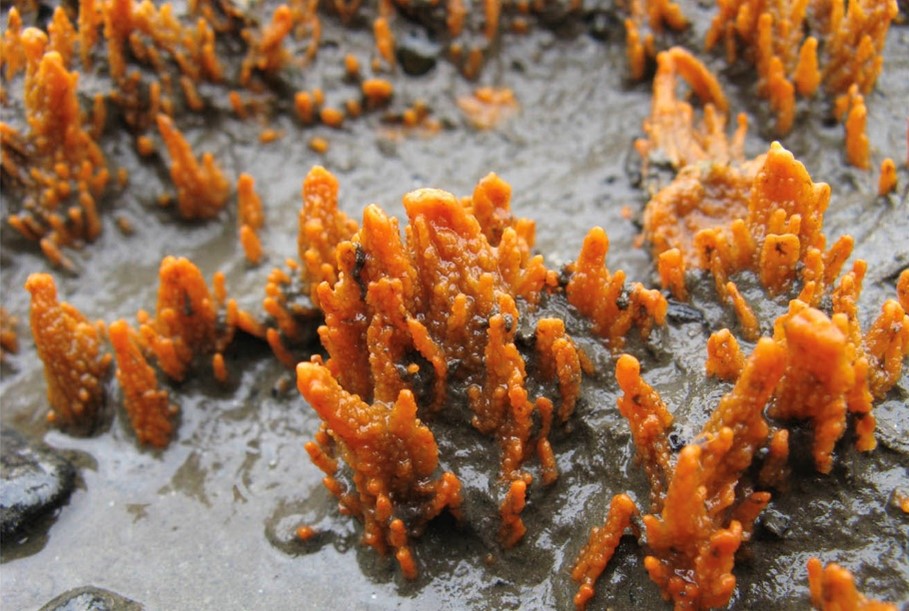
Oceanicaulis stylophorae (LMG 2723T)
We rely on chemical substances on a daily basis, leaving a trail of environmental contamination as the chemicals accumulate. Lindane, an insecticide used in post-WWII agriculture, has contributed significantly to environmental pollution and poses risks to human health, including cancer and the central nervous system.
Behold Oceanicaulis stylophorae (LMG 2723T), a bacteria isolated from the demosponge Hymeniacidon perlevis that has the ability to degrade lindane. We can use the strength of this bacterium through a process called bioremediation, in which we can harness the power of microbes to reduce pollution and clean up the environment!
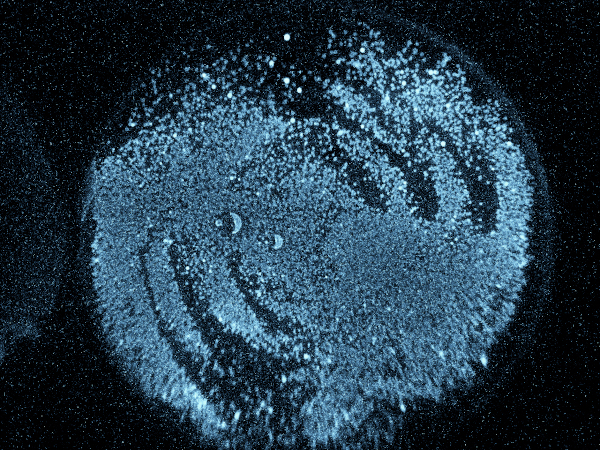

Aliivibrio fischeri (LMG 26186)
Aliivibrio fischeri (formerly Vibrio fischeri ), which was named after Bernhard Fischer, a German bacteriologist, is a Gram-negative, rod-shaped, flagellated, non-pathogenic bacterium, ubiquitously distributed in sub-tropical and temperate marine environments. This bioluminescent species is commonly found in the light organs of various marine organisms, such as the Hawaiian bobtail squid. These bacteria emit blue light (λ = 490 nm) through a chemical reaction known as bioluminescence, which involves the oxidation of a molecule called luciferin in the presence of the enzyme luciferase. The light produced by this reaction serves a variety of functions for the host organism, such as camouflage, attracting prey, and communication. In the symbiotic relationship between Aliivibrio fischeri and the Hawaiian bobtail squid, the bacteria colonize the squid's light organ and produce light in response to environmental cues, such as changes in the ambient light level. This allows the squid to match its body luminosity with the surrounding water and avoid being detected by predators. An industrial application of Aliivibrio fischeri is the bioluminescence inhibition assay, commonly used to assess the ecotoxicity of various environmental pollutants, including chemicals, heavy metals, and other toxicants. In these assays, the toxicity of a substance is measured by its ability to inhibit the light produced by bioluminescent bacteria.
Common applications are the quality monitoring of fresh, marine, brackish and drinking water. In addition to its ability to quickly measure toxicity, the bioluminescence inhibition assay has several other advantages. It is non-invasive, as it does not require sacrificing test organisms, and it is highly sensitive, making it useful for detecting even low levels of toxicity. Furthermore, it is easy to perform and can be automated, which makes it ideal for large-scale studies.
BCCM/LMG offers the freeze-dried the bacterial strain LMG 26186 in different volumes and formats together with a rehydration solution, according to the ISO 11348-3 standard
Cyanobacteria
Cyanobacteria have emerged as valuable players in the field of bioremediation. Their natural talent for photosynthesis allows them to convert sunlight and carbon dioxide into energy and organic matter. So, they can be harnessed to help clean up CO2-rich environments. They have also shown potential to remove various pollutants, like heavy metals, from water and soil, by absorbing such compounds and preventing their dispersion. Cyanobacteria can also contribute to the reduction of excess nutrients, such as nitrogen and phosphorus, in water bodies through a process called nutrient assimilation. Cyanobacteria's ability to photosynthesize, accumulate metals, and assimilate nutrients makes them, therefore, valuable candidates for bioremediation efforts.
Diatoms and other microalgae
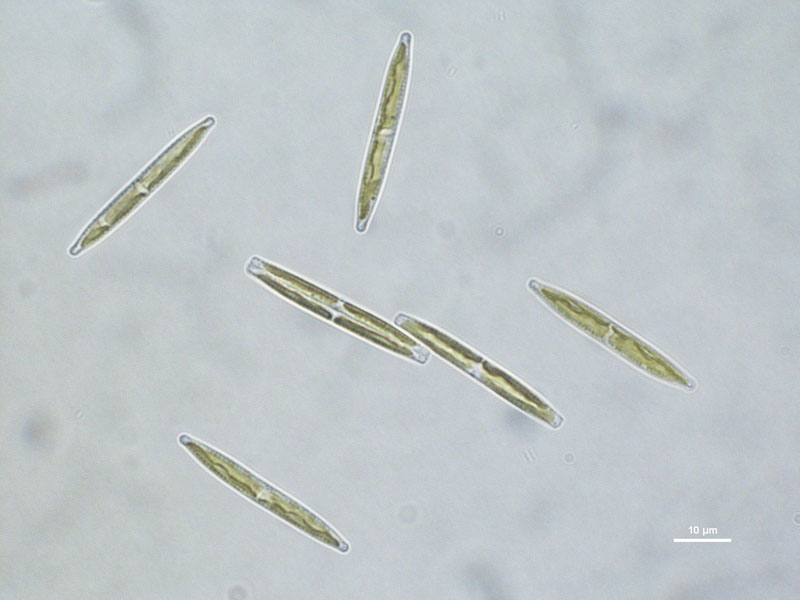
Nitzschia palea (DCG 0751)
Pollution of water with heavy metals and organic waste from e.g., industry and agriculture, is a danger to our diverse ecosystems and to our own health. An overabundance of these heavy metals, such as cadmium, lead and manganese in our water leads to the accumulation of these potentially toxic metals throughout the entire food chain. However, current water treatment techniques are often expensive and maintenance-intensive. Diatoms and other microalgae provide a solution to this problem. Some microalgae grow very rapidly in nutrient rich (waste)water and can absorb up to 10% of their total biomass in heavy metals into their cells. In this way, after removing the microalgae, the potentially harmful effects of the heavy metals can be mitigated. This form of bioaccumulation can be a cost-effective and environmentally friendly alternative to current technologies to reduce the amount of heavy metals in our food chain.
Diatom mediated heavy metal remediation: A review. Marella et al., Bioresource Technology (2020).
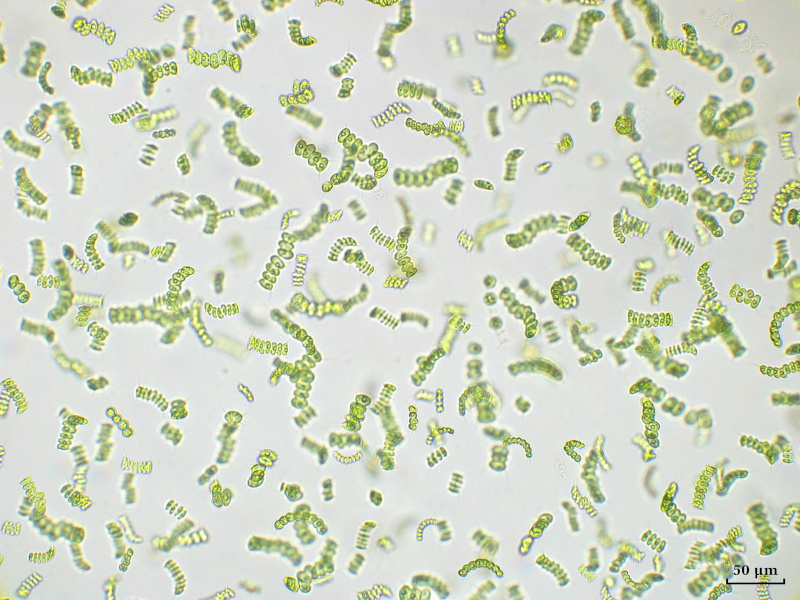
Desmodesmus armatus (DCG 1000)
Large scale agricultural activities such as meat production and the accompanied maintenance of livestock leads to large amounts of organic waste. This, among the growth and transport of feed for said livestock increases the growing pressure onto our planet due to its large carbon footprint. The organic waste can be treated with anaerobic digestion, but this leaves a highly nitrogen rich digestate as a byproduct. Using this as a fertilizer would only increase the problem of overfertilisation of soils, as well as increasing the nitrogen pollution of groundwater associated with the fields. Desmodesmus armatus and Chlorella vulgaris have proven to grow efficiently on paper filtered digestate. While growing on the excess of nutrients, the harvested biomass of these microalgae can be a viable, low-cost alternative for livestock feed, decreasing the carbon footprint and pollution of these agricultural activities.
Mycobacteria
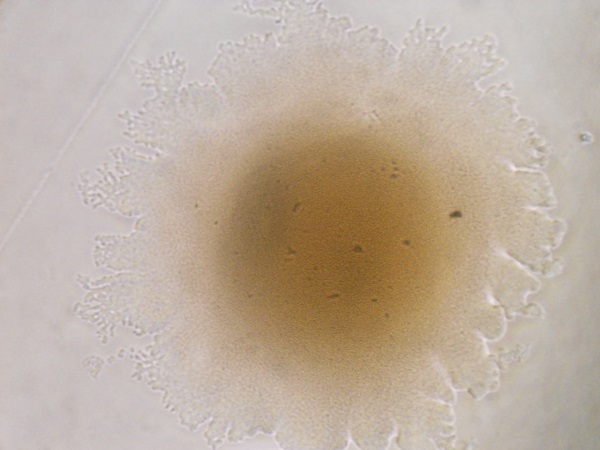
Mycobacterium vanbaalenii
There's a new set of heroes in town, and they go by the name of mycobacteria! These environmental champions have an incredible superpower called bioremediation. Armed with this extraordinary ability, mycobacteria can swoop in and save the day when it comes to cleaning up contaminated environments. Whether it's oil spills, chemical pollutants, or toxic waste, these mighty mycobacteria have the power to break down and devour all sorts of environmental nasties. With their specialized enzymes and metabolic wizardry, they transform hazardous substances into harmless byproducts.
Soil contaminated with high-molecular-weight (HMW) polycyclic aromatic hydrocarbons (PAHs) have a low bioavailability. Treatment with Mycobacterium vanbaalenii PYR-1 can lead to 15% decrease in HMW-PAHs, allowing for improved germination of bermudagrass or switchgrass seeds.

